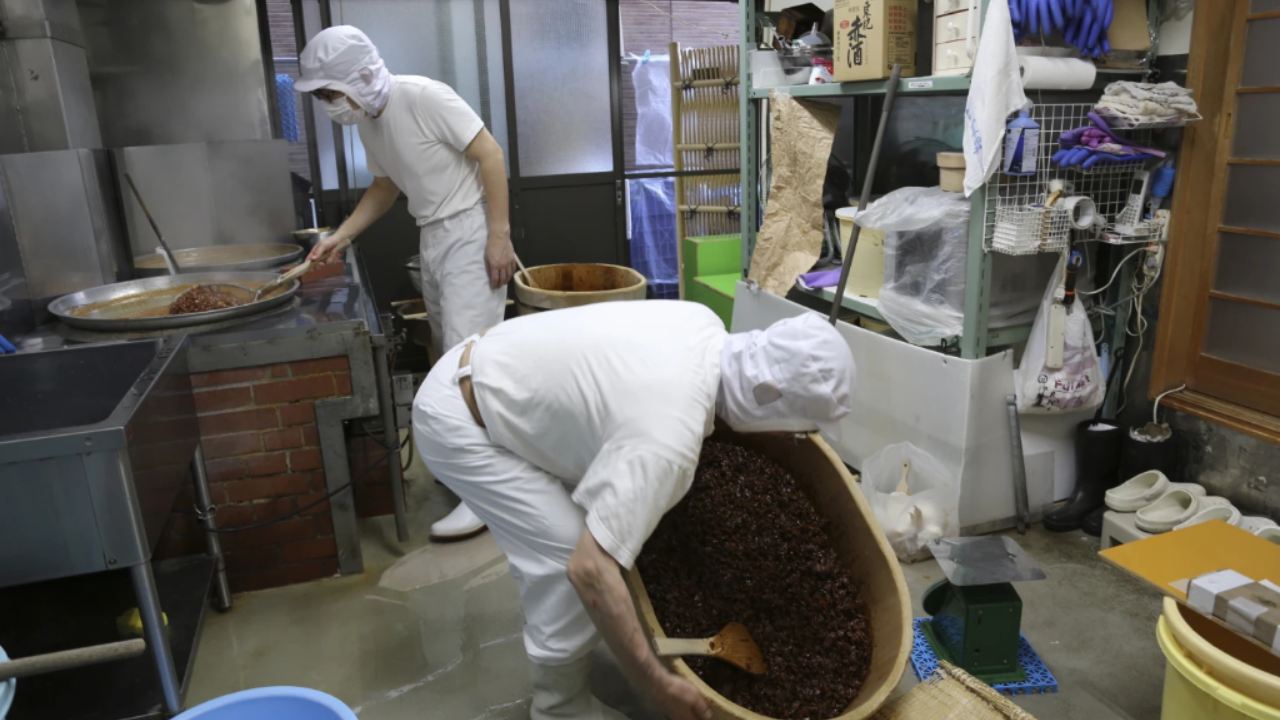
©(AP Photo/Yuri Kageyama)
Pre-reading questions:
I will read each question. Then, please answer them.
- What do you imagine when you hear the words “traditional cooking”?
- What kind of food reminds you of home? Why?
Vocabulary:
I will read the words, meanings, and sample sentences. Then, repeat after me.
- preserved /pri-ZURVD/
- clam /klam/
- salty /SAWL-tee/
- refrigeration /ri-frij-uh-REY-shuhn/
- culinary /KYOO-luh-ner-ee/
[adjective] – kept in good condition or protected from spoiling or damage
The old recipe uses preserved vegetables that can be stored for many months.
[noun] – a type of shellfish with a soft body and a hard shell, often used in cooking
She made pasta with fresh clams and white sauce for dinner.
[adjective] – tasting of or containing salt
The soup was too salty, so I added some water to fix the taste.
[noun] – the process of keeping food or other items cold to prevent spoiling
Before refrigeration, people used salt to keep meat fresh.
[adjective] – related to cooking or the kitchen
She attended a famous school to improve her culinary skills.
Article reading:
Please read the whole article. Then, I will check your pronunciation and intonation.
The production of tsukudani, a traditional Japanese preserved food, continues in the Tsukuda area of Tokyo, where it began over 200 years ago. At a small shop called Tsukushin, father and son Nobuo and Yoshihiro Kobayashi start working at 5 a.m. They cook tuna, shrimp, seaweed, and clams using traditional methods. These ingredients are simmered in a sweet and salty sauce made with seasonings from the Edo period, long before refrigeration was available. Although large factories now make tsukudani in big amounts, the Kobayashis use gas-heated pots and wooden trays to make it in small batches by hand. This way of cooking helps protect the traditional skills and flavors that are part of Japan’s food culture.
The cooking must be done carefully. The ingredients are stirred only a little to avoid breaking them. Yoshihiro Kobayashi says tsukudani is like jam because it is rich in flavor and easy to eat. People usually eat it with steamed rice, miso soup, or chazuke—a dish where hot tea is poured over rice. It is also used in rice balls and lunch boxes. Today, there are new products like tsukudani-flavored snacks. However, producers say that keeping the traditional way of cooking is important. Shops like Tsukushin help preserve the cultural and culinary traditions of Japan.
The cooking must be done carefully. The ingredients are stirred only a little to avoid breaking them. Yoshihiro Kobayashi says tsukudani is like jam because it is rich in flavor and easy to eat. People usually eat it with steamed rice, miso soup, or chazuke—a dish where hot tea is poured over rice. It is also used in rice balls and lunch boxes. Today, there are new products like tsukudani-flavored snacks. However, producers say that keeping the traditional way of cooking is important. Shops like Tsukushin help preserve the cultural and culinary traditions of Japan.
Comprehension questions
I will read each question. Then, please answer them based on the article.
- Where did tsukudani start more than 200 years ago?
- What time do Nobuo and Yoshihiro Kobayashi start their work?
- What are four ingredients they use to make tsukudani?
- What is one thing people did before refrigeration?
- Why is Tsukushin important for Japanese food culture?
Discussion questions
I will read each question. Then, please answer them.
- Have you ever eaten food that was cooked in a traditional way? If so, what was the food, and who made it? If not, would you like to try traditional food? Why or why not?
- Have you ever seen or visited a small food shop like Tsukushin? If so, what did they sell? If not, would you like to visit one? What would you like to see?
- Do you agree that making food by hand is better than using machines?
- Why do you think people still use old cooking methods today?
- How can we help protect food traditions in our country?